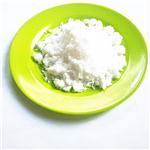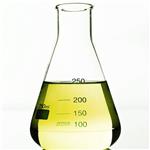Polyurethane synthesis and Foamed polyurethanes
Jul 26,2024
Polyurethane often abbreviated PUR and PU) refers to a class of polymers composed of organic units joined by carbamate (urethane) links. A polyurethane is typically produced by reacting a polymeric isocyanate with a polyol. Since polyurethane contains two types of monomers, which polymerize one after the other, they are classed as alternating copolymers. The isocyanates and polyols used to make a polyurethane contain two or more functional groups per molecule.

Applications
Polyurethane is a kind of polymer that contains repeating urethane groups. With an enormous diversity of chemical compositions and properties, it has found wide applications in several technological areas in our daily lives, such as automotive parts, footwear, furnishings, construction, coatings, etc.
Synthesis
Polyurethane is produced by reacting diisocyanates with polyols, often in the presence of a catalyst, or upon exposure to ultraviolet radiation. Common catalysts include tertiary amines, such as DABCO, and DMDEE, or metallic soaps, such as dibutyltin dilaurate. The stoichiometry of the starting materials must be carefully controlled as excess isocyanate can trimerize, leading to the formation of rigid polyisocyanurates. The polymer usually has a highly crosslinked molecular structure, resulting in a thermosetting material that does not melt on heating; although some thermoplastic polyurethanes are also produced.

Foamed polyurethanes
Foamed polyurethanes result from diisocyanates with organic compounds, usually polyesters, containing carboxyl groups; these reactions liberate bubbles of carbon dioxide that remain dispersed throughout the product. The use of polyethers or polyesters containing hydroxyl groups in preparing polyurethanes results in the formation of elastomeric fibers or rubbers that have outstanding resistance to attack by ozone but are vulnerable to the action of acids or alkalies.
- Related articles
- Related Qustion
1,7-Dimethylxanthine is a naturally occurring alkaloid compound that can enhance alertness and reduce drowsiness.....
Feb 27,2025API4 4-dimethyl-2-cyclohexen-1-one is a ketone organic compound used in organic synthesis and scientific research experiments.....
Jul 26,2024Organic ChemistryPolyurethane
9009-54-5You may like
- Polyurethane foams
-

- $0.00 / 25KG
- 2025-03-21
- CAS:9009-54-5
- Min. Order: 1KG
- Purity: 99%
- Supply Ability: 50000KG/month
- Polyurethane foams
-

- $30.00 / 1kg
- 2025-03-07
- CAS:9009-54-5
- Min. Order: 1kg
- Purity: 0.99
- Supply Ability: 20 tons
- Polyurethane foams
-

- $31.00 / 1KG
- 2021-08-14
- CAS:9009-54-5
- Min. Order: 1g
- Purity: 99.9%
- Supply Ability: 500000kgs






